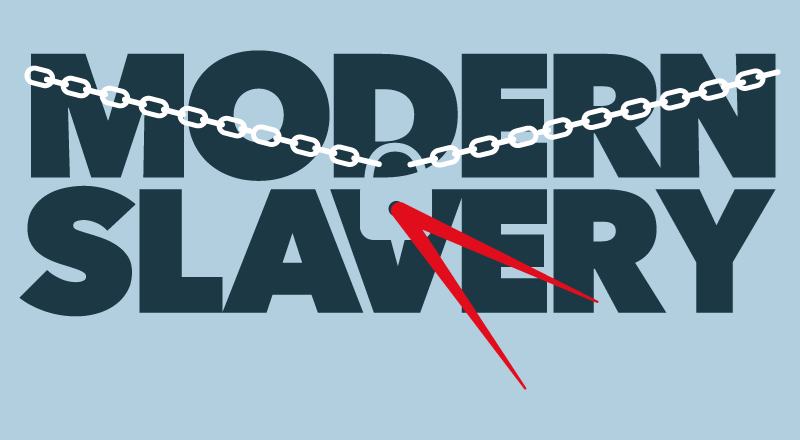Truth be told, we have probably seen procurement and supply chain planning at both its worst and its best during the pandemic. At its worst, and compounded in the UK by Brexit, we have seen a dearth of affordable warehousing, a slump of belly freight capacity, a lorry driver shortage, components stuck in the wrong locations and empty shelves in supermarkets – to name just a few lows.
At its best, we have the example of the vaccine as a new high for best practice. Distribution of the vaccine at such pace was, Wildgoose reminds us, down to parallel development, testing and distribution planning. It is no accident that records were broken, and lives saved – he puts the success of the vaccine roll-out in the UK to proactivity and collaboration.
“That lesson of being proactive, thinking about risks, and planning is something any corporate can take away from the example of the vaccine roll-out,” says Wildgoose. “Just being reactive to risk in a supply chain is an expensive way of doing things.”
He also rates collaboration as a significant enabler of supply chain excellence. He points to the collaboration along the vaccine supply chain, and the level of trust that grew between industry, government and supra-national organisations. This is something seldom seen among corporates generally. What is important, he says, is to build a supply chain ecosystem in which all participants are open and trusting – this requires a specific set of behaviours and resisting the temptation to exploit a competitive advantage or a position of power.
Now more than ever, agility is the name of the game. And that agility depends upon the availability of accurate, fit-for-purpose, timely data. “One of the key cost-effective ways to drive agility into a supply chain is to have good data available,” says Wildgoose. “Successful supply chain planning means mapping out the supply chain, so companies know where, for example, production plants are located, where the key ports are, and what key commodities are coming from those places. And then companies need to overlay relevant forward-looking risk data onto that model.”
This further data will have many sources: it could be generated inside the business, from along the supply chain or from news stories or social media, for example. Sounds simple, but it is not, and companies are still largely on the back foot. Wildgoose points out that most corporates are pretty good at evaluating their own internal risks. The risks that still keep the C-suite awake at night are those hard-to-evaluate risks that are peppered along the supply chain.
During the pandemic, those external risks have come into sharp focus. The conclusion? “The just-in-time system has many advantages, but it lacks some resilience,” says Wildgoose. So, does that mean this is the end for just-in-time supply chains, or does it only work if all the right data is in place? “Just-in-time delivery won’t go away totally, in my opinion, because it makes sense in terms of cost efficiency. But what is needed is much more clarity and transparency. Corporates need multi-tier supplier transparency – and it isn’t there yet,” he says. “I think governments will drive this because of concerns in respect of sustainability and labour practices – if it doesn’t happen naturally.”
Accurate data along the entire supply chain has never been more important. He explains, by way of example, that if a major car manufacturer can see that its order book has gone up by 200%, it is vital that that number is communicated along the entire supply chain. “If participants in that supply chain that will be impacted by the increase don’t get pure data visibility, they will start double-guessing the numbers. They might hear that demand is going to double and conclude that that manufacturer is being conservative which might cause them to double that number again, resulting in an assumption that the increase in production will be closer to 400%,” he says. Then mayhem may well ensue.
But transparency is difficult to achieve in the private sector because there’s often a lack of trust. Wildgoose says: “A company might have a good relationship with the next tier down, but getting that tier to trust you enough to give you full visibility of their suppliers is tricky. What I believe is going to change is that governments are going to push the agenda. They are going to do so not just for the sake of resilience, but because of the UK’s Modern Slavery Act. If you, as a company, are responsible for saying there’s no child labour anywhere in your supply chain, not just in tier one, how can you do that without transparency?”
Then there is carbon reporting. “Around 60-80% of a typical corporate’s footprint is in its supplier base. So how are you going to control and influence that if you don’t have transparency?” he points out. And it doesn’t stop with modern slavery or climate. Think of biodiversity loss and the impact of geopolitics, for example – going forward, so much more information needs to move up and down that supply chain to make it truly resilient.
Even US President Biden is talking about supply chains. He’s pushing for diversified supply chains that are much better secured. He wants them to be transparent and he needs them to be sustainable. And it is not surprising. When you look at the source of the world’s critical metals, such as lithium and cobalt – used in electric batteries – these are substantially located or refined in places like China, and in locations that the world has not really taken much notice of previously.
And finance professionals must take notice of this shift in consumer expectations too. “It is their responsibility to develop financial and non-financial metrics, because they’re the experts at this,” says Wildgoose. “For example, they will have to align their strategic objectives appropriately to deliver a reduction in their carbon footprints and thereby also to improve the resilience in their supply chains by driving transparency.”
And Wildgoose points out that today, more than ever, it all comes down to understanding the value you have at risk in your procurement and supply chain strategy. It is no longer just about saving costs.
Trade: clean growth and tech
Clean growth and the application of major emerging technologies to existing sectors are two key characteristics of trade in 2022. Add to these levelling up supported by foreign direct investment, and there are exciting future prospects for business and the prosperity of communities globally.




